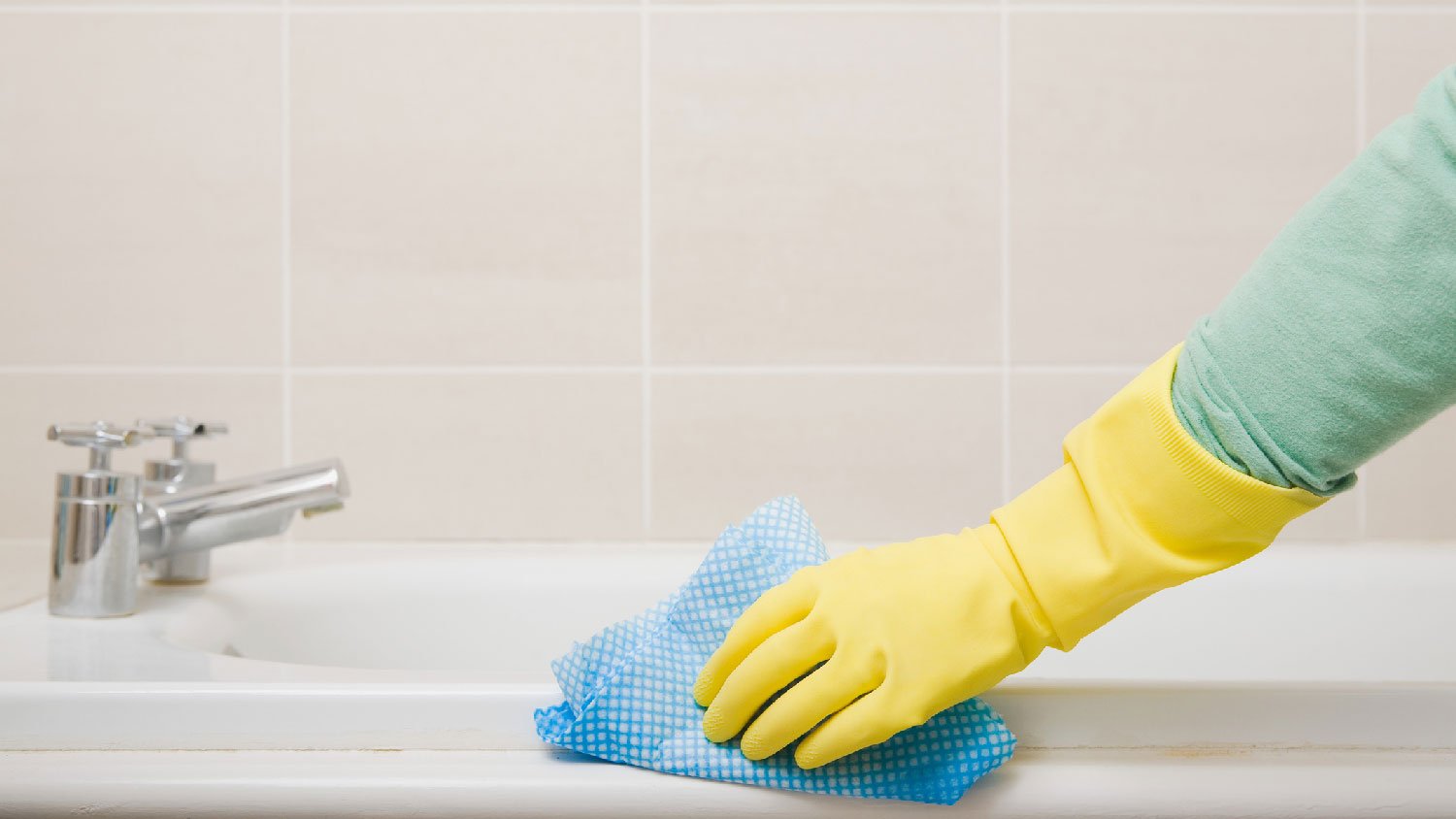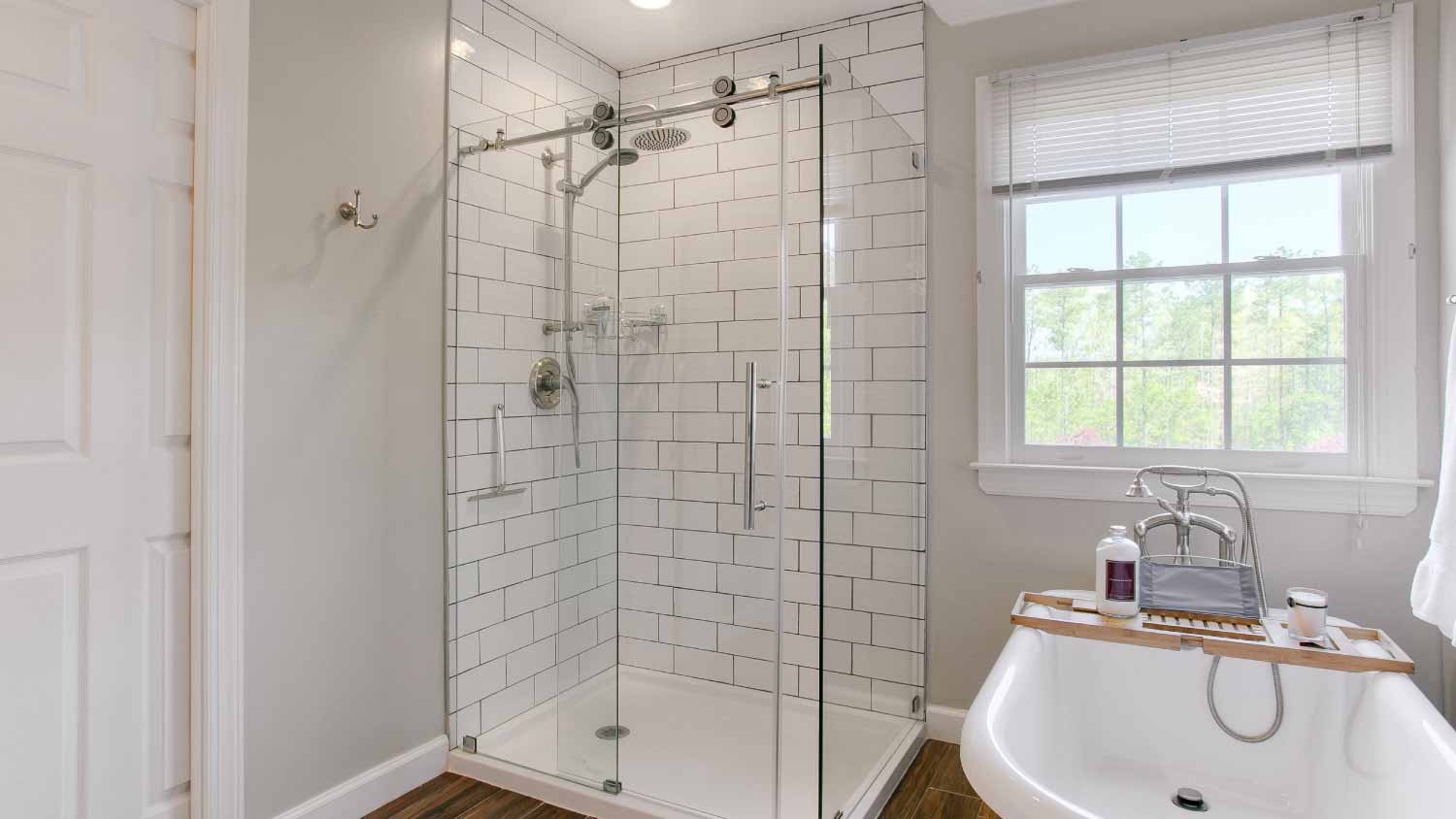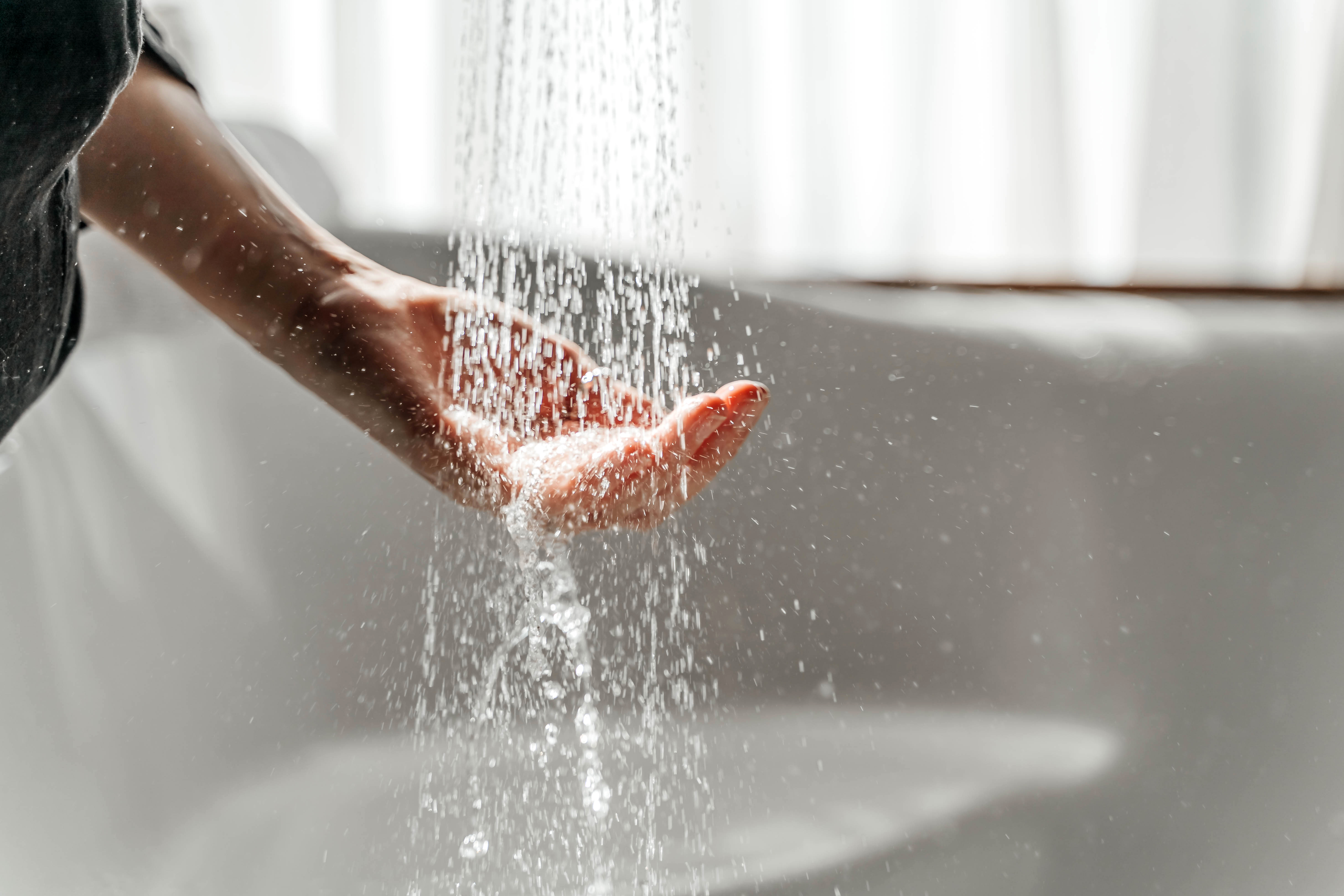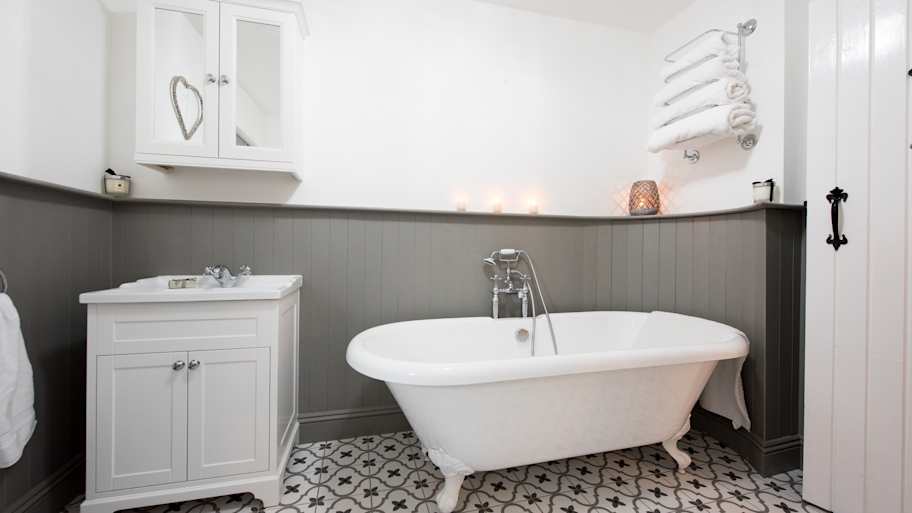
Bathtub refinishing costs are relatively inexpensive and can make your bathroom look like new. Our guide gives you the information to learn more about this process.
Bring a fresh look to your bathroom without buying a new tub


Reglazing a bathtub means adding a new coat of enamel as a cheaper alternative to replacing a damaged tub.
You must remove the bathtub’s old surface before reglazing.
Reglazing can be a DIY project, but it’s easier to hire a pro, which costs $480 on average.
If you’re looking into how to redo your bathtub, it’s likely for one of two reasons: the tub has flaked, cracked, and rusted over years of use, or it simply doesn’t fit your style. Fortunately, reglazing the bathtub can remedy both issues. We’ll break down what reglazing is, if it’s worth doing, and how to do it. That way your bathtub can be a place of peace and relaxation, as intended—no stress involved.
Reglazing is the process of removing a tub’s old coating and applying a new layer, usually an epoxy resin. It’s a cost-effective way to improve your current bathtub instead of purchasing a new one.
Most bathtubs can be reglazed, including ones made of steel, cast iron, fiberglass, and acrylic, unless they have severe damage or leaks. Reglazing is one of several ways to refinish a bathtub, along with repainting, installing a bathtub liner, or adding a bathtub inlay.

Reglazing is the most common way to refinish a bathtub because it fixes several problems at once:
Damage: All sorts of damage can befall a bathtub, whether it’s a one-time accident or gradual deterioration. A shower caddy can fall and gouge the tub, for example. A lack of structural support can cause a crack at your feet.
Discoloration: Your bathtub might have been pristinely white when you bought it, but it’s natural for porcelain or fiberglass to yellow or fade over time.
Outdated design: Whether you’ve grown tired of your bathtub’s current style or you’ve moved into a new place and the tub is stuck in the 60s, an aesthetic revamp is a reason to reglaze.
However, there are issues that reglazing can’t fix. You may need to purchase a new bathtub or hire a local plumber to do a more serious repair. These larger issues include broken pipes, structural damage underneath the tub, and widespread mold.
| Pros | Cons |
|---|---|
| Cheaper than replacing the bathtub | Difficult DIY Project |
| Lasts 10 to 15 years | Can’t use bathtub for 2-3 days |
| Increases home’s resale value | May not fix serious issues |

If you choose to reglaze your bathtub yourself, here are the basic steps:
Purchase a refinishing kit. This covers the must-have materials like epoxy resin, hardener, and primer. Refinishing kits can be found at most hardware stores and cost between $30 to $150.
Remove the caulk and bathtub hardware, namely the spout and drain plate.
Ventilate the room. The next few steps involve potentially dangerous fumes, so safety is important.
Clean the bathtub. This ensures that the epoxy applies correctly.
Remove the old glaze. Apply a combination of etching powder and water to the bathtub and scrub it with an abrasive pad.
Sand the bathtub. Use 400-grit or 600-grit wet/dry sandpaper on all areas, then rinse, wipe, and dry the tub.
Apply primer. This should come in your refinishing kit and can be applied with a brush or roller.
Apply epoxy coating. Mix epoxy resin with hardener and apply the solution to the bathtub’s entire surface with a brush or roller. You’ll likely need to apply two coats but consult the kit instructions beforehand.
Recaulk and reinstall hardware. After your tub is sealed and the spout and drain cover are back in place, all that’s left is to wait until the epoxy cures.
Saving money is one of the biggest benefits of reglazing your bathtub. The cost to professionally refinish a bathtub ranges from around $300 to $900, with an average cost of $480. Even if your refinishing project falls on the higher end of that range, it would likely be cheaper than purchasing a brand-new bathtub. With installation and plumbing factored in, replacing a bathtub costs $5,520 on average. Homeowners can save even more money by reglazing the bathtub on their own—the materials needed for a DIY refinish cost about $150.
Reglazing can be done in a few hours, but it has several hands-on steps and requires harsh chemicals, which is why we recommend that most homeowners find a local bathtub refinisher for the job. Naturally, hiring a contractor costs more than going the DIY route, but the expenses can end up fairly close if you have to buy several tools and materials needed for reglazing.
From average costs to expert advice, get all the answers you need to get your job done.

Bathtub refinishing costs are relatively inexpensive and can make your bathroom look like new. Our guide gives you the information to learn more about this process.

Find out how much it costs to refinish your porcelain sink and the factors that influence the final price to make it look like new, including size, type, and labor.

Is bathtub refinishing worth it? Yes, it can breathe fresh life into your bathroom by making your tub look brand new. It can also save you hundreds of dollars.

If you’re installing or replacing your shower doors, you’ll be working with a glass installation pro. Here are the most common shower door questions for this project.

There’s really only one solution when the finish starts to peel off. We’ll show the reasons why your bathtub is peeling and how to fix it.

Weighing the pros and cons of freestanding bathtubs? Learn the good, the bad, and the costs to decide which bathtub best fits your bathroom and budget.